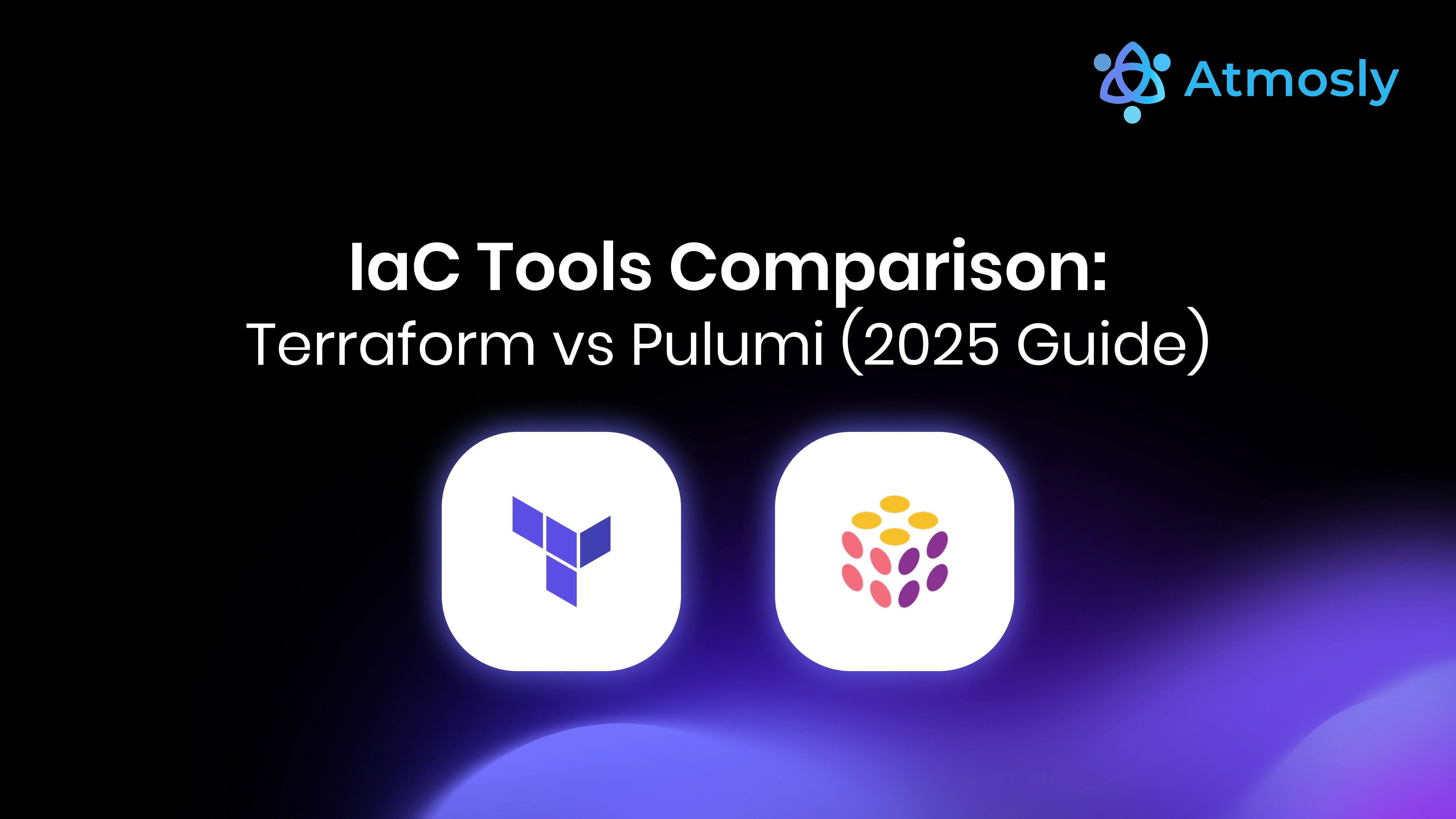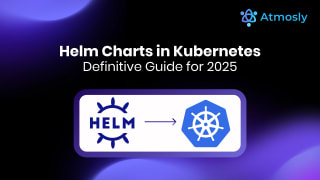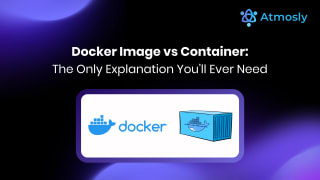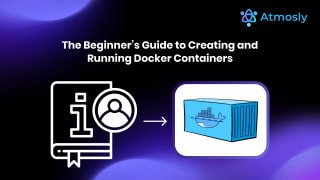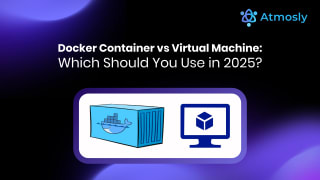Infrastructure has always been the backbone of software delivery. In the past, managing infrastructure meant manual provisioning of servers, networking, and storage, a process that was slow, error-prone, and difficult to scale. The shift to cloud computing and DevOps brought with it a new approach: Infrastructure as Code (IaC).
IaC allows teams to define, provision, and manage infrastructure using code instead of manual steps. This means infrastructure is version-controlled, repeatable, auditable, and scalable. Today, IaC is an essential part of DevOps and cloud-native environments.
Two of the most popular IaC tools are Terraform and Pulumi. Terraform, created by HashiCorp, is widely adopted by enterprises and known for its declarative syntax and massive ecosystem of providers. Pulumi, a newer entrant, takes a modern approach by letting developers define infrastructure using familiar programming languages like TypeScript, Python, Go, and C#.
This guide provides a comprehensive comparison of Terraform vs Pulumi in 2025. We’ll break down their history, syntax, ecosystem, strengths, weaknesses, and use cases so you can choose the right tool for your team.
1. What is Infrastructure as Code (IaC)?
Infrastructure as Code is the practice of managing and provisioning computing infrastructure through machine-readable configuration files instead of manual processes. With IaC, infrastructure is treated like software: it’s codified, tested, versioned, and deployed automatically.
1.1 Benefits of IaC
- Automation: Reduces human error by automating provisioning.
Consistency: Environments (dev, staging, prod) are identical because they’re defined in code. - Scalability: Infrastructure can scale up or down automatically.
- Collaboration: Code can be peer-reviewed and stored in version control systems like Git.
- Auditability: Every infrastructure change is tracked and logged.
1.2 Role of IaC in DevOps and Cloud-Native
IaC is the foundation of modern DevOps practices. It integrates seamlessly with CI/CD pipelines, enabling continuous delivery not just of code but of infrastructure. For cloud-native applications running on AWS, Azure, Google Cloud, or Kubernetes, IaC ensures consistency and resilience.
In short: IaC is to infrastructure what Git is to code.
2. Overview of Terraform
Terraform was created by HashiCorp in 2014 and has since become the de facto standard for IaC in many organizations.
2.1 Core Concepts
- HCL (HashiCorp Configuration Language): A declarative syntax for defining resources.
- Providers: Plugins that allow Terraform to manage resources across AWS, Azure, GCP, Kubernetes, and 2,000+ services.
- State Management: Terraform tracks infrastructure state in local or remote files.
Modules: Reusable building blocks of Terraform code for standardized infrastructure.
2.2 Strengths of Terraform
- Massive Ecosystem: Terraform has one of the largest provider libraries in the IaC space.
- Multi-Cloud: Supports all major cloud providers and many third-party services.
- Stability: Proven and trusted by enterprises for nearly a decade.
- Community Support: Huge community with tutorials, modules, and best practices.
2.3 Limitations of Terraform
- HCL Limitations: Declarative syntax is simple but can feel restrictive for complex logic.
- Learning Curve: Ops teams adapt easily, but developers may find HCL unintuitive.
- State Management: Managing state files can be complex and risky if not done properly.
Terraform remains a rock-solid choice, particularly for enterprises that value maturity and ecosystem breadth.
3. Overview of Pulumi
Pulumi was launched in 2017 as a modern alternative to Terraform. Instead of using a domain-specific language like HCL, Pulumi allows infrastructure to be defined using general-purpose programming languages.
3.1 Core Concepts
- Languages: Supports TypeScript, Python, Go, and C#.
- SDKs: Pulumi provides SDKs for defining resources as code.
- State Management: State is stored in the Pulumi Service (SaaS) or self-hosted backends.
- Stacks: Configurable instances of infrastructure, similar to environments.
3.2 Strengths of Pulumi
- Developer-Friendly: Uses real programming languages, making it intuitive for developers.
- Flexibility: Supports loops, conditionals, and abstractions natively.
- Integration: Fits easily into modern DevOps workflows with GitHub Actions, GitLab, and CI/CD.
- Multi-Cloud: Supports all major cloud providers.
3.3 Limitations of Pulumi
- Smaller Ecosystem: Fewer native providers compared to Terraform.
- Younger Tool: Less battle-tested in large enterprises.
- Programming Required: Teams without coding experience may struggle.
Pulumi is well-suited for developer-centric teams building modern cloud-native applications.
4. Terraform vs Pulumi: Head-to-Head Comparison
Here’s a detailed breakdown of how Terraform and Pulumi compare across key dimensions.
4.1 Language & Syntax
- Terraform: Uses HCL, a declarative language. Example:
resource "aws_s3_bucket" "example" {
bucket = "my-tf-bucket"
acl = "private"
}- Pulumi: Uses general-purpose languages. Example in TypeScript:
import * as aws from "@pulumi/aws";
const bucket = new aws.s3.Bucket("my-bucket", {
acl: "private",
});Verdict: Terraform is simpler for ops engineers; Pulumi is more flexible for developers.
4.2 Ecosystem & Providers
- Terraform: 2,000+ providers, official registry, massive ecosystem.
- Pulumi: Leverages Terraform providers but fewer native integrations.
Verdict: Terraform wins on ecosystem maturity.
4.3 Learning Curve & Team Adoption
- Terraform: Easier for operations and infrastructure teams.
- Pulumi: Easier for developers already using Python, TypeScript, or Go.
Verdict: Depends on team composition.
4.4 State Management
- Terraform: Local or remote state with locking (Terraform Cloud, S3, etc.).
- Pulumi: State stored in Pulumi Service (SaaS) by default, or self-hosted.
Verdict: Pulumi’s managed service is convenient; Terraform offers more flexibility.
4.5 Multi-Cloud & Portability
Both tools support AWS, Azure, GCP, and Kubernetes. Terraform’s provider ecosystem gives it a slight edge.
4.6 Extensibility & Automation
- Terraform: Limited to HCL with modules and workarounds.
- Pulumi: Full programming power allows loops, conditionals, functions, and abstractions.
Verdict: Pulumi is more extensible.
4.7 Community & Ecosystem Support
- Terraform: Huge community, widely adopted by enterprises.
- Pulumi: Growing community, developer-focused but smaller.
Verdict: Terraform wins on adoption; Pulumi is gaining traction.
4.8 Cost & Licensing
- Terraform: Open-source, with Terraform Cloud as a commercial option.
- Pulumi: Open-source core, with SaaS offering for enterprise features.
Verdict: Both have free tiers; Pulumi’s managed service adds value for some teams.
5. When to Use Terraform
Terraform is best for:
- Ops-Focused Teams: Infrastructure engineers and sysadmins who prefer declarative configuration.
- Enterprises: Large organizations that value stability and compliance.
- Multi-Cloud Management: Companies using multiple providers.
- Standardization: Organizations adopting IaC at scale with modules and best practices.
6. When to Use Pulumi
Pulumi is best for:
- Developer-Focused Teams: Teams comfortable with Python, TypeScript, or Go.
- Startups & SaaS: Companies building modern, cloud-native applications quickly.
- Complex Logic: Use cases requiring loops, conditionals, and abstractions
- CI/CD Integration: Teams that want IaC to feel like application code.
7. Alternatives Beyond Terraform & Pulumi
While Terraform and Pulumi dominate cross-cloud IaC, other tools exist:
- AWS CloudFormation: Native AWS IaC tool, limited to AWS.
- Azure Bicep: Simplified IaC for Azure.
- Google Cloud Deployment Manager: Native GCP option.
- Crossplane: Kubernetes-native IaC tool.
These alternatives are valuable but less flexible across clouds compared to Terraform and Pulumi.
8. The Future of IaC
The future of Infrastructure as Code is evolving rapidly.
- AI-Driven IaC: Tools like GitHub Copilot and Atmosly’s AI copilots are already generating Terraform and Pulumi code automatically.
- Policy-as-Code: Compliance will increasingly be embedded using tools like OPA and Sentinel.
- Platform Engineering: Internal Developer Platforms (IDPs) will abstract IaC complexity, making infrastructure self-service.
- Unified Platforms: Tools like Atmosly are emerging to combine IaC, DevOps automation, compliance, and cost intelligence in one solution.
IaC will move from being a specialized skill to a standard practice embedded in every software delivery pipeline.
9. Conclusion
Both Terraform and Pulumi are excellent IaC tools, but they cater to different audiences:
- Terraform shines for operations-heavy teams, enterprises, and multi-cloud environments that require stability and breadth of provider support.
- Pulumi is perfect for developer-driven organizations, SaaS startups, and modern cloud-native applications that need flexibility and programmability.
Ultimately, the right choice depends on your team’s skills, workflows, and infrastructure complexity. Some organizations even use both: Terraform for standard infrastructure and Pulumi for application-focused stacks.
If you want to simplify the complexity of Terraform or Pulumi, platforms like Atmosly provide AI-powered automation, visual pipeline builders, compliance-as-code, and cost intelligence. Atmosly accelerates IaC adoption and makes it accessible for teams of all sizes.
In 2025, the future of IaC is not just about Terraform vs Pulumi, it’s about how tools, AI, and platforms come together to make infrastructure secure, scalable, and developer-friendly.
